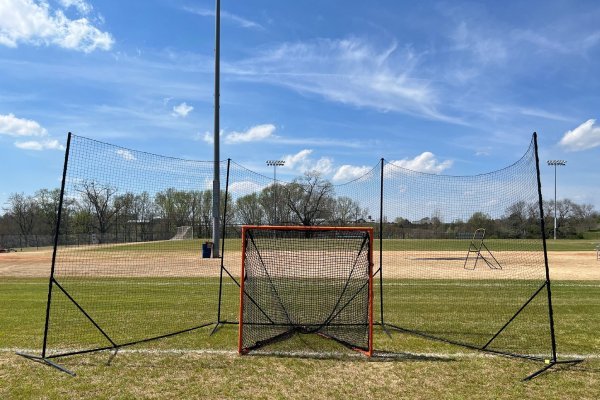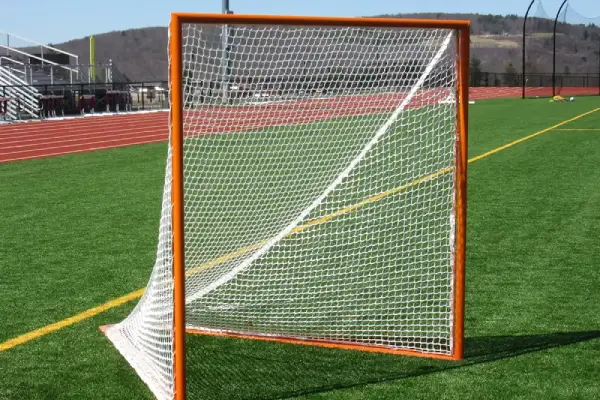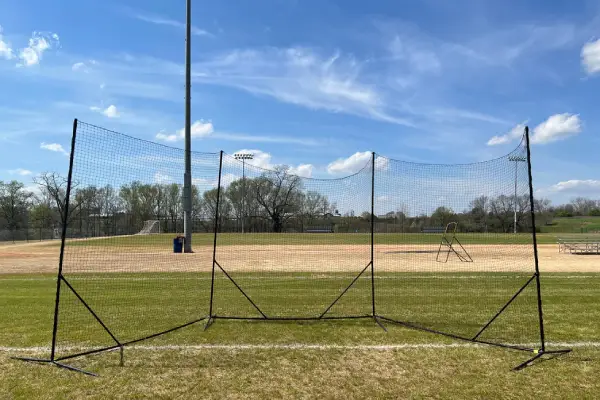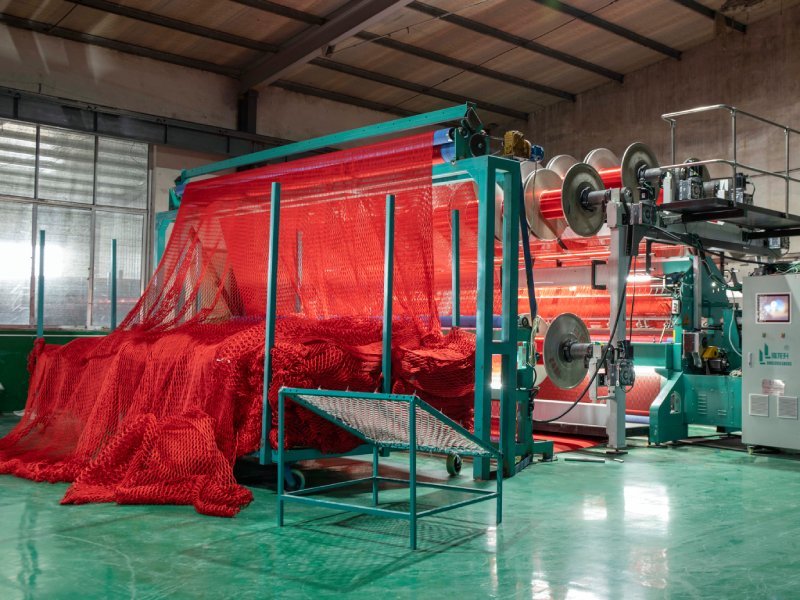At Wenneting, we specialize in manufacturing high-performance lacrosse nets designed for rigorous training and official matches. Our nets are trusted by clubs, schools, and facilities worldwide for their durability, safety, and ability to withstand intense gameplay. With customizable options and rapid delivery, we help you equip your fields with reliability and confidence.




Looking for high-performance divider netting and safety netting solutions that combine durability, safety, and customization? Wenneting is your trusted partner! With 25+ years of expertise in manufacturing premium sports barrier nets, batting cages, and industrial safety nets, we help gyms, warehouses, children’s playgrounds, and sports facilities enhance safety, optimize space, and reduce costs.
Lacrosse is a fast-paced, exciting sport that requires high-quality equipment to ensure safety, performance, and enjoyment. One of the most critical pieces of equipment is the lacrosse net, which serves as the backbone of any goal. Whether you’re a player, coach, or parent setting up a backyard practice area, choosing the right lacrosse net can make a big difference in your game. This article will guide you through everything you need to know about selecting the perfect lacrosse net, including netting types, custom options, and a step-by-step installation guide. We’ll keep things simple and straightforward to help you make an informed decision.
A lacrosse net does more than just catch the ball—it impacts the flow of the game, player safety, and the longevity of your equipment. A poorly chosen net might tear under powerful shots, be difficult to install, or fail to meet regulation standards for competitive play. On the other hand, a high-quality net ensures durability, ease of use, and compliance with rules, allowing players to focus on their skills without worrying about equipment failures.
When selecting a lacrosse net, you need to consider factors like the level of play (youth, high school, college, or professional), the type of goal frame, the environment (indoor or outdoor), and your budget. Additionally, custom options can add functionality or style, while proper installation ensures the net performs as expected. Let’s dive into the details.
Lacrosse nets come in various types, each designed to meet specific needs based on the level of play, goal type, and environmental conditions. The main factors to consider when choosing a netting type are material, thickness, mesh size, and whether the net is for field or box lacrosse. Below, we break down the key types of lacrosse netting.
The material of the net determines its durability, weather resistance, and ability to withstand high-velocity shots. The most common materials are:
Nylon: Nylon nets are lightweight, strong, and resistant to wear. They’re a popular choice for both practice and competitive play because they hold up well against repeated impacts. Nylon is also UV-treated in many cases, making it suitable for outdoor use without rapid degradation.
Polyester: Polyester nets, especially high-strength ones like 1000D polyester, are known for their exceptional durability. They’re often 40% stronger than standard nylon nets and are ideal for intense play, such as in professional or college games. Polyester nets are also weather-resistant, making them great for outdoor fields.
Polyethylene: Advanced polyethylene nets, like Rukket’s SPDR STEEL netting, are designed for extreme durability, boasting up to 10 times the strength of Kevlar. These are perfect for high-impact environments but may be more expensive.
Plastic: Plastic nets are cheaper but less durable. They’re not recommended for serious play as they can tear easily and degrade quickly under sunlight or heavy use.
Recommendation: For most players, nylon or polyester nets are the best choice due to their balance of durability, cost, and performance. Avoid plastic nets unless you’re on a very tight budget and only need a net for light, casual use.
The thickness of the net, measured in millimeters (mm), affects its strength and ability to handle powerful shots. Common thicknesses range from 2.5mm to 8mm:
2.5mm–3mm: These thinner nets are often included with budget or practice goals. They’re suitable for youth players or casual backyard use but may not withstand high-velocity shots from older players. They’re prone to tearing and need frequent replacement.
4mm–5mm: These nets offer a good balance of durability and affordability. They’re suitable for high school or club play and can handle moderate to high-intensity shots. Many brands, like Predator Sports and Gladiator Lacrosse, offer 5mm nets for both field and box lacrosse.
6mm–7mm: These thicker nets are designed for competitive play, including college and professional levels. They can endure repeated high-velocity shots and are often made of high-strength polyester or nylon. Brands like CrankShooter and Champion Sports offer 6mm and 7mm options for maximum durability.
8mm: The thickest nets available, like those from Champion Sports, are built for extreme durability and are ideal for professional or heavy-use environments. They’re less common for casual play due to their higher cost.
Recommendation: Choose a net thickness based on the level of play. For youth or casual play, 4mm–5mm is sufficient. For competitive high school or college games, opt for 6mm–7mm nets. If you’re setting up a professional field, consider 8mm nets for longevity.
The mesh size refers to the size of the holes in the net, typically measured in inches. Regulation lacrosse nets have a mesh size of 1.4 to 1.75 inches to ensure the ball doesn’t pass through. Smaller mesh sizes (e.g., 0.6 inches, as in some FORZA nets) are designed to catch high-speed shots more effectively but may be heavier and more expensive.
Recommendation: Stick to regulation mesh sizes (1.4–1.75 inches) for most goals to ensure compliance with USA Lacrosse and World Lacrosse standards. Smaller mesh sizes are a bonus for professional setups but aren’t necessary for casual or youth play.
Lacrosse nets vary depending on whether they’re for field lacrosse or box (indoor) lacrosse:
Field Lacrosse Nets: These are designed for standard 6ft x 6ft x 7ft goals used in high school, college, and professional play. They’re typically made of thicker, weather-resistant materials to handle outdoor conditions and high-velocity shots. Most field nets have square or rounded corners, depending on the goal frame.
Box Lacrosse Nets: These are smaller, designed for 4ft x 4ft x 4ft or 4ft x 4ft x 5ft goals used in indoor or box lacrosse. They’re often made of high-strength polyester to withstand close-range, high-intensity shots. Some brands, like LacrosseBallsDirect, offer box nets with extra lacing cord for secure installation.
Recommendation: Ensure the net matches your goal type. Check the goal frame dimensions and corner shape (square or rounded) before purchasing. For example, Gladiator Lacrosse offers both square and rounded corner nets in 5mm and 6mm thicknesses.
Customizing your lacrosse net can enhance functionality, aesthetics, and team spirit. Many manufacturers offer custom options to tailor nets to your specific needs. Here are the most common customizations:
While white is the standard color for lacrosse nets, some brands offer black, green, or other colors. Colored nets can add a unique look to your goal or match team colors. For example, CrankShooter offers 7mm Beast Mode nets in both white and black, while some brands allow custom color requests for bulk orders.
Consideration: Check with your league’s regulations, as some require white nets for official games. Colored nets are great for practice or backyard setups.
Some manufacturers, like Gilman Gear, allow you to add a team logo or name to the net for a personalized touch. This is ideal for school teams, clubs, or professional organizations looking to showcase their brand. Note that custom logos often come with an additional fee (e.g., Gilman Gear charges a $75 art setup fee).
Consideration: Ensure you have a high-resolution logo file ready and check lead times, as custom nets may take longer to produce.
Custom nets can include reinforced edges, triple-stitched seams, or vinyl borders for added durability. For example, Carron Net offers nets with sewn rope borders or vinyl borders with grommets for extra strength. These features prevent fraying and extend the net’s lifespan, especially in high-use environments.
Consideration: Reinforced nets are worth the investment for competitive play or fields exposed to harsh weather.
For safety and convenience, you can customize your setup with backstop netting. Backstop nets, like those from Hot Bed or Jaypro, are placed behind or around the goal to catch errant shots, protecting spectators and reducing ball retrieval time. These can be customized in size (e.g., 30ft to 180ft long) and material (e.g., nylon or polyethylene).
Consideration: Backstop netting is essential for multi-sport fields or crowded areas. Choose portable systems for practice fields or permanent ones for stadiums.
Some nets come with custom attachment options, such as quick-connect bungees, Velcro ties, or extra lacing cord. For example, CrankShooter includes 110–120 feet of lacing cord and quick ties, while Park & Sun Sports uses a bungee cord frame with Velcro ties for fast setup.
Consideration: Custom attachment systems can save time during installation, especially for portable goals used in multiple locations.
Installing a lacrosse net properly ensures it stays secure, performs well, and lasts longer. Below is a step-by-step guide to lacing a lacrosse net to a goal, based on standard practices and tips from sources like Lacrosseballstore.com.
Lacrosse net (ensure it matches your goal’s size and corner shape)
Lacing cord (60–120 feet, depending on the net)
Fasteners (zip ties, Velcro strips, or quick-connect bungees)
Scissors or a knife to cut the lacing cord
A friend (optional, but helpful for larger goals)
Check the Net and Goal Compatibility
Confirm the net matches your goal’s dimensions (e.g., 6ft x 6ft x 7ft for field lacrosse or 4ft x 4ft x 4ft for box lacrosse).
Check if the goal has square or rounded corners to ensure the net fits properly.
Align the Net
Lay the net over the goal frame, aligning the top corners of the net with the top corners of the goal.
Ensure the net’s “spines” (thicker edges, often made of nylon or canvas) are on the outside of the goal frame, forming a tent-like shape.
Check that the back of the net reaches the base of the goal’s rear apex.
Secure the Top Corners
Use fasteners (zip ties, Velcro strips, or short pieces of lacing cord) to attach the net to one top corner of the goal.
Place one fastener on the horizontal pipe (crossbar) and another on the vertical pipe (post) for extra support.
Pull the net taut across the top pipe to the opposite corner and secure it with fasteners in the same way.
Lace the Sides
Take a long piece of lacing cord and start at the bottom of one vertical post (e.g., the left side).
Weave the cord through every other mesh hole up the left post, across the top pipe, and down the right post.
Keep the net taut but not overly tight to avoid stretching or tearing.
Tie off the cord at the bottom of the right post with a secure knot.
Lace the Bottom and Rear
Attach another piece of lacing cord to the ground pipe where it meets the bottom of the right post.
Weave the cord through every other mesh hole along the right ground bar.
When you reach the rear curve of the goal (the apex), weave through every mesh hole for extra strength.
Continue weaving every other hole along the left ground bar until you reach the left post.
Tie off the cord securely.
Check the Net’s Shape
The net should form a pyramid or “V” shape at the back to catch balls effectively.
Ensure there are no loose areas or gaps where the ball could slip through.
Adjust the lacing if needed to tighten or reposition the net.
Test the Net
Take a few practice shots to ensure the net can handle impacts without coming loose.
Check all fasteners and knots to confirm they’re secure.
Use Extra Cord: If the net comes with extra lacing cord (e.g., CrankShooter’s 110 feet), use it to reinforce weak spots or replace worn sections later.
Avoid Over-Tightening: Lacing too tightly can strain the net and cause premature wear.
Store Properly: If the net is for outdoor use, store it indoors when not in use to protect it from UV damage and weathering.
Consider Quick-Connect Systems: Nets with bungees or Velcro ties (e.g., Park & Sun Sports) can reduce installation time significantly.
Inspect the net regularly for tears or fraying, especially after heavy use.
Clean the net with mild soap and water to remove dirt and debris.
Replace lacing cord or fasteners if they show signs of wear (e.g., brittle zip ties from UV exposure).
For outdoor nets, consider UV-resistant options to extend lifespan.
Youth: Lighter, thinner nets (4mm–5mm) are sufficient for younger players with less powerful shots.
High School/Club: Opt for 5mm–6mm nets to handle stronger shots and frequent use.
College/Professional: Choose 6mm–8mm nets for maximum durability and regulation compliance.
Outdoor: Select weather-resistant materials like UV-treated nylon or polyester to withstand rain, sun, and wind.
Indoor: Focus on durability and ease of setup, as indoor nets (e.g., for box lacrosse) face intense, close-range shots.
Prices range from $20 for basic 2.5mm nylon nets to $100+ for 7mm–8mm professional nets. Investing in a thicker, high-quality net can save money in the long run by reducing replacements.
Trusted brands like CrankShooter, Gladiator Lacrosse, Champion Sports, and Lacrosseballstore offer reliable nets with good customer reviews. Check for warranties or guarantees, like Rukket’s Fair Play Guarantee, for added peace of mind.
For practice fields or backyard use, choose lightweight, portable nets with quick-setup features like bungees or collapsible frames.
Here are some top picks based on different needs:
Best for Youth/Backyard: CrankShooter QUICK CLIP 4mm White Net (easy setup, affordable, durable for casual play).
Best for High School/Club: Gladiator Lacrosse 6mm White Net (square or rounded corners, strong and reliable).
Best for Professional: Champion Sports 7mm Weather-Treated Net (knotless polyester, built for intense games).
Best for Box Lacrosse: LacrosseBallsDirect 5mm Box Net (includes 60 feet of lacing cord, high-strength polyester).
Choosing the right lacrosse net is about balancing durability, compatibility, and ease of use for your specific needs. By understanding netting types (material, thickness, mesh size), exploring custom options (color, logos, reinforced features), and following a proper installation process, you can ensure your lacrosse goal is ready for action. Whether you’re setting up a backyard practice area or outfitting a professional field, investing in a high-quality net will enhance your game and save you time and money in the long run. Take the time to measure your goal, check league regulations, and choose a net that matches your level of play. With the right net in place, you’ll be ready to score goals and dominate the field!
They are primarily made from UV-stabilized, high-density polyethylene (HDPE). This material offers the perfect balance of exceptional strength, resistance to rot and mildew, and superior UV protection to prevent degradation from sun exposure, ensuring long-lasting performance.
Absolutely. We specialize in custom ODM orders. Simply provide us with the exact dimensions, and we can manufacture nets to fit any goal frame, standard or custom.
Every production batch undergoes rigorous in-house testing for tensile strength and tear resistance. Furthermore, we are ISO 9001 certified and our products can be verified by third-party labs like SGS/TUV, providing you with independent quality assurance.
We are known for our flexibility. We welcome small batch orders to help you test the market or fulfill specific projects, making us an ideal partner for growing businesses.
Yes. We provide OEM logo customization services. We can weave or print your logo directly onto the netting, which is excellent for branding and preventing theft.
For standard items, we can ship within 15-20 days. For customized orders, the lead time may be slightly longer, but we will always provide a clear timeline upfront and stick to it.
Yes. The UV-stabilized materials and weather-resistant construction make our nets perfect for permanent outdoor installation. Their high strength also makes them an excellent choice for indoor facilities.
Yes, we can provide sample pieces of our netting material for you to evaluate quality, color, and strength before placing a larger order.
our lacrosse nets have been the go-to choice for procurement managers and sports facilities globally. Clients rely on us for products that combine superior craftsmanship with practical benefits like reduced maintenance costs and enhanced player safety More Projects

25-Years Expertise in Safety Nets & Divider Netting | OEM/ODM Custom Colors/Logo | ISO9001 Certified | Fast 15-Day Delivery | 8,000 Ton Annual Output
Signup our newsletter to get update information, news & insight